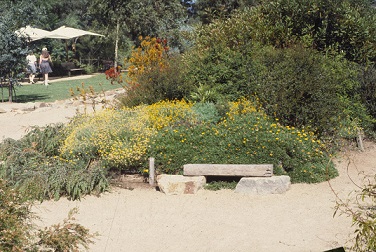Who manages amenity horticulture sites?
These days many different
professions are involved in the management of natural and designed
landscapes, including architects, town planners, engineers, landscape
architects, environmental scientists, sport and recreation specialists,
botanists, biologists, horticulturists and agronomists. Depending on the
size and nature of the site, and the inputs required to manage that
site, people from these (and possibly other) professions might be
employed as specialist consultants, as site managers or as team leaders.
The management of a horticultural site typically includes the following tasks:
-
Defining a mission, vision, goals and activities planning
- Ensuring that the above are reached or planned within a specified time frame
- Managing budgets
- Managing human resources
- Managing material resources
- Managing natural resources
What that means is that the manager must
define where the organisation is going or, if that is already defined,
how to get there with the resources available, in the time available.
This usually means looking for more resources and solving problems
related to the running of the amenity site together with the team that
he or she is leading.
Learn about managing budgets,
managing human resources and managing material resources.
This course can be taken after Amenity Horticulture I, or as a stand
alone course for those with some experience in the industry.

COURSE CONTENT
This course is divided into seven lessons as follows
- Adapting Amenity Horticulture to Changing needs
- Macro Panning for Amenity Land Provision
- Resources and Information.
- Environmental impacts
- Economic Impacts
- Community Involvement
- Developing a Management Plan
Course Duration - 100 hours
Learn How Management Needs to be Informed by Multiple Factors
No single factor has only a positive or only a negative effect on the management or existence of an amenity site. In general, the benefits and drawbacks of a given decision, policy or action must be weighed before a decision is made.
Social, cultural and environmental issues can rarely be considered in isolation; the effect of any one of these areas will impact on the others too. For example, we may decide that it is beneficial for the local population that an amenity site receives more visitors, as this creates wealth locally, but we would have to consider the environmental and cultural aspects of that decision. After weighing up the pros and cons, we may decide that it would be better to have a constrained but more sustainable development of the amenity site, creating a quality tourism experience instead of mass tourism. In the longer term this would most likely result in increased quality of life for the local community, in financial as well as environmental and cultural terms.
Community Policies – Impacts on Local Strategies
Community laws, policies, habits and uses, including tribal laws and indigenous people’s laws, must be considered when planning strategies and actions for the management or development of amenity sites.
An example of the importance of community habits or usage is the ‘right of way’ existing in the UK. These are ancient paths that have been preserved for public use even in private lands. The ‘right of way’ exists as long as the path is used, so there have been considerable polemics with private owners impeding the passage of people through their land. When the path is not used for a period of time, the ‘right of way’ is lost. To avoid this, community organisations have been promoting the use of these paths a minimum amount of times during the year, therefore making sure that owners don’t have ‘excuses’ to close the path to public users.